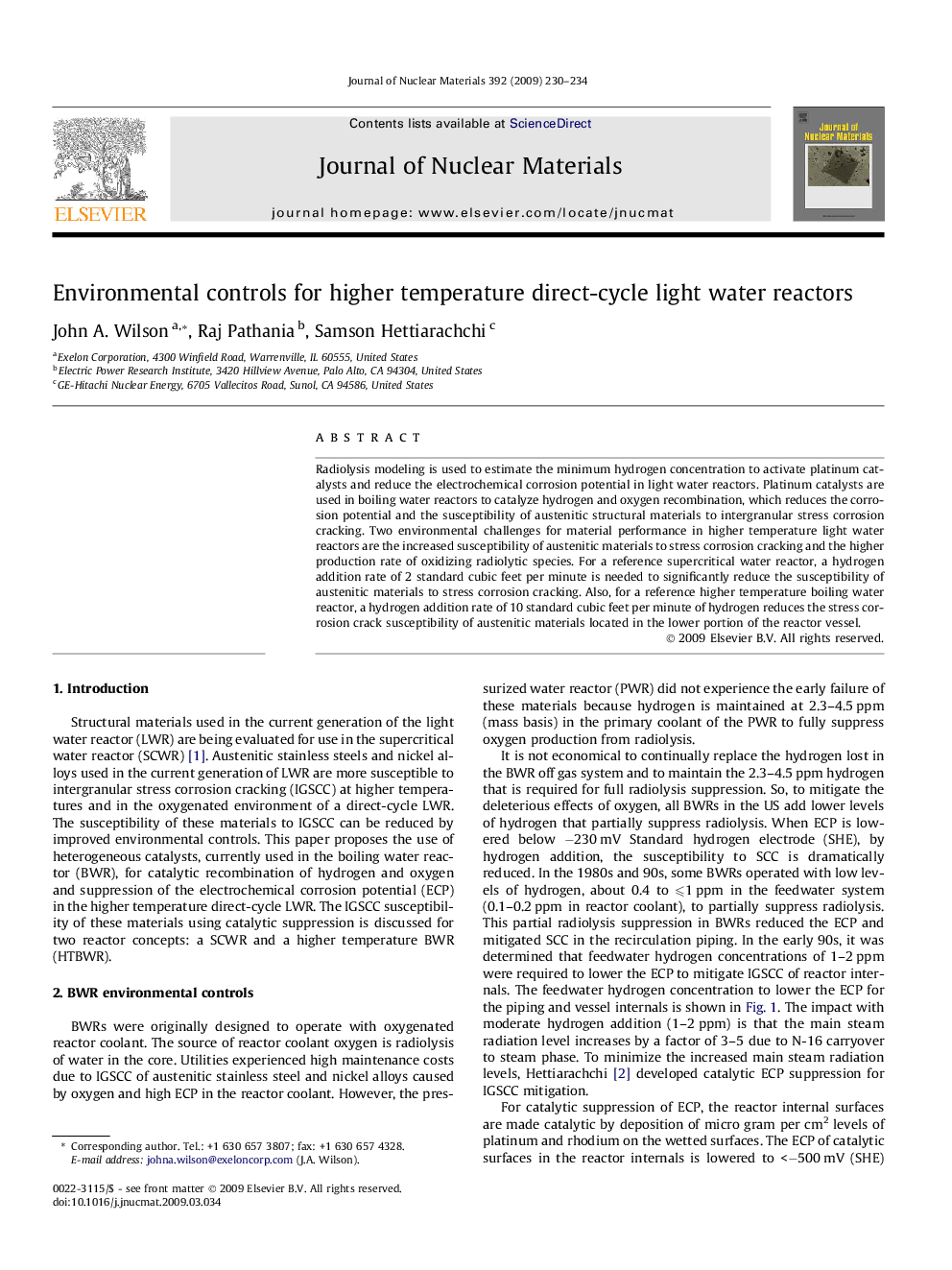| Article ID | Journal | Published Year | Pages | File Type |
|---|---|---|---|---|
| 1568416 | Journal of Nuclear Materials | 2009 | 5 Pages |
Abstract
Radiolysis modeling is used to estimate the minimum hydrogen concentration to activate platinum catalysts and reduce the electrochemical corrosion potential in light water reactors. Platinum catalysts are used in boiling water reactors to catalyze hydrogen and oxygen recombination, which reduces the corrosion potential and the susceptibility of austenitic structural materials to intergranular stress corrosion cracking. Two environmental challenges for material performance in higher temperature light water reactors are the increased susceptibility of austenitic materials to stress corrosion cracking and the higher production rate of oxidizing radiolytic species. For a reference supercritical water reactor, a hydrogen addition rate of 2 standard cubic feet per minute is needed to significantly reduce the susceptibility of austenitic materials to stress corrosion cracking. Also, for a reference higher temperature boiling water reactor, a hydrogen addition rate of 10 standard cubic feet per minute of hydrogen reduces the stress corrosion crack susceptibility of austenitic materials located in the lower portion of the reactor vessel.
Related Topics
Physical Sciences and Engineering
Energy
Nuclear Energy and Engineering
Authors
John A. Wilson, Raj Pathania, Samson Hettiarachchi,
